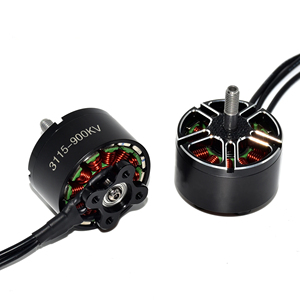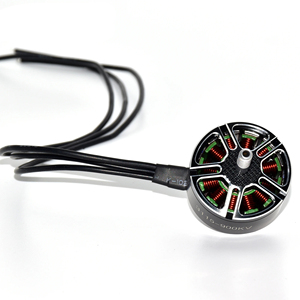
All categories
Featured selections
Trade Assurance
Buyer Central
Help Center
Get the app
Become a supplier

(923 products available)







































RC helicopter blades come in different types that vary depending on the brand and model. However, some of the common types include the following:
Wooden blades
These blades are ideal for beginners because they are inexpensive and easy to replace when damaged. They are lightweight and have a good amount of lift. However, RC helicopter wooden blades are not durable and get damaged quickly when one crashes.
Carbon fiber blades
These are the most popular because they are very rigid and last longer. They are great for doing aerobics because of their high strength and low weight. However, they are expensive and cost much to replace. When damaged, they shatter like glass and can also damage the helicopter's frame.
Plastic blades
The RC helicopter plastic blades are on most small helicopters. They are very cheap and easy to make. Although they are not as durable as carbon fiber blades, they last longer than wooden blades. They are also heavier than wooden blades, which reduces the amount of lift when using the helicopter.
Foam blades
These blades come with very small electric helicopters. They are super light, which makes them very maneuverable when flying indoors. However, they are cheap and get damaged quickly. They are only good for flying a few times before the helicopter needs a new set of blades.
Hybrid blades
The RC helicopter hybrid blades combine two or more materials to take advantage of the benefits of each type. For instance, they can have a wood core with a carbon fiber skin for better aerodynamics. They are designed to give the best performance with increased durability.
There are several aspects to consider before choosing the main rotor blades for the RC helicopter from which one can take flight. This includes the type of helicopter, flying style, material, length, and width.
Type of helicopter
The type of RC helicopter affects the choice of rotor blades. The helicopters are classified into two categories: fixed-pitch and collective-pitch. For fixed-pitch helicopters, the blades with a constant pitch are the best choice. On the other hand, blades with variable pitch need to be installed on collective pitch helicopters.
Flying style
The rotor blades that a person chooses also depend on the flying style. Easy flying with smooth loops calls for a high lift and low pitch rotor blade. For stunts and fast flying, a variable pitch blade is the most appropriate.
Material
The blade material is worth considering when making the choice. Plastic blades are ideal for beginners as they are less likely to break. As the skills improve, one can move to carbon fiber and wood blades as they last longer and provide more lift.
Length and width
The performance of the helicopter is affected by the length and width of the rotor blades. The helicopter has a larger diameter and can produce more lift when the blades are long. With short blades, the helicopter becomes more responsive to changes. The helicopter uses wide blades for more lift and more drag, while the helicopter uses narrow blades for less lift and less drag.
Maintaining safety in RC helicopter main rotor blades is crucial to prevent injuries and accidents. Here are some key safety aspects to consider:
Proper Installation
Ensure the rotor blades are properly installed according to the manufacturer's specifications. This includes using the appropriate fasteners and ensuring they are securely tightened. Loose or improperly installed blades can detach during flight, causing damage or injury.
Regular Maintenance
Regularly inspect the rotor blades for any signs of wear, such as cracks, chips, or splintering. Replace any damaged blades immediately. Regularly check the helicopter's overall condition, including the rotor system, gears, and electronics.
Battery Safety
Use quality batteries and chargers, and always follow the manufacturer's guidelines. Avoid overcharging or damaging batteries, as this can lead to fires.
Pre-Flight Checks
Conduct thorough pre-flight inspections to ensure all components, including the rotor blades, are in good condition and properly assembled. Check the control systems, servos, and other relevant parts to confirm they are functioning properly.
Flight Area Safety
Choose a safe and open flight area free from obstacles, people, and animals. Ensure the flying site is clear and suitable for your helicopter's size and performance.
When assessing the quality of RC helicopter main rotor blades, there are several key factors to consider to ensure optimal performance, durability, and safety. Here are the important aspects to evaluate:
Material
RC helicopter blades are made from different materials, each with pros and cons. Wood blades are great for beginners because they're cheap and easy to fix. But, they break easily and don't last long in crashes. Plastic blades are strong and flexible, making them perfect for beginners and 3D pilots. They also last longer than wooden ones. Carbon fiber blades are incredibly strong and smooth, so they work well at high speeds. However, they're pricey and can break other parts in a crash. Fiberglass blades are tough and last a long time, but they're heavier. They suit larger helicopters. Nylon blades are super strong and flexible, ideal for rough landings, but they don't work well in extreme heat.
Design and Aerodynamics
The design and shape of the blades affect how well they fly. Good quality blades have precise, well-thought-out designs that minimize noise and vibrations, giving a smoother flight experience. Blades with good aerodynamics react quickly to controls, making flying more enjoyable.
Balance and Precision
Top quality blades are balanced and made precisely, leading to smooth spinning and less vibration. This keeps the helicopter stable and makes it safer and more enjoyable to fly. Vibration can cause damage over time.
Flexibility and Strength
Good blades handle stress without breaking, ensuring they last long during flights. They also have the right amount of flexibility to absorb impacts without cracking.
Weight
The weight of the blades affects the helicopter's performance. Blades that are too heavy or too light can make it hard to control the helicopter. Quality blades have the right weight to improve performance and stability.
Q1: What materials are typically used for main rotor blades?
A1: The main rotor blades are often made of composite materials, such as carbon fiber or fiberglass, due to their high strength and low weight.
Q2: How often should rotor blades be inspected?
A2: Rotor blades should be inspected regularly for signs of wear, damage, or deformation, which may compromise safety and performance.
Q3: What is the role of the pitch control mechanism?
A3: The pitch control mechanism adjusts the angle of attack of the blades, allowing for precise control over lift and helicopter altitude.
Q4: How are rotor blades balanced?
A4: Balance the blades by ensuring equal weight distribution along their length to prevent vibrations and mechanical strain on the helicopter.
Q5: What are the consequences of damaged rotor blades?
A5: Damaged rotor blades can lead to catastrophic failure, loss of control, and accidents, making thorough inspections and maintenance vital.